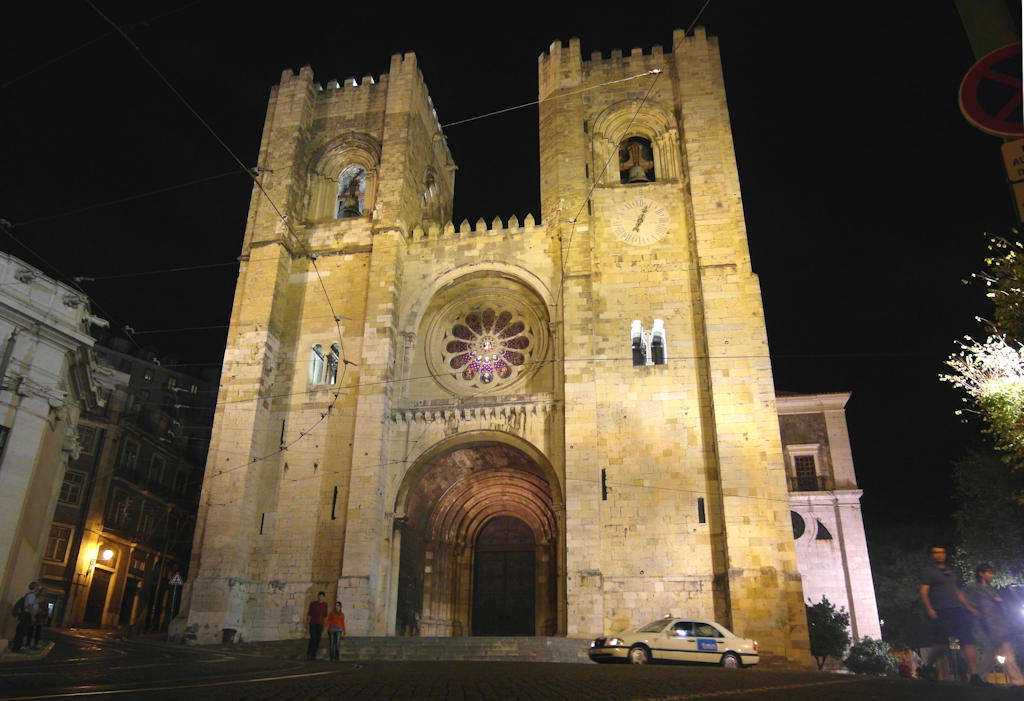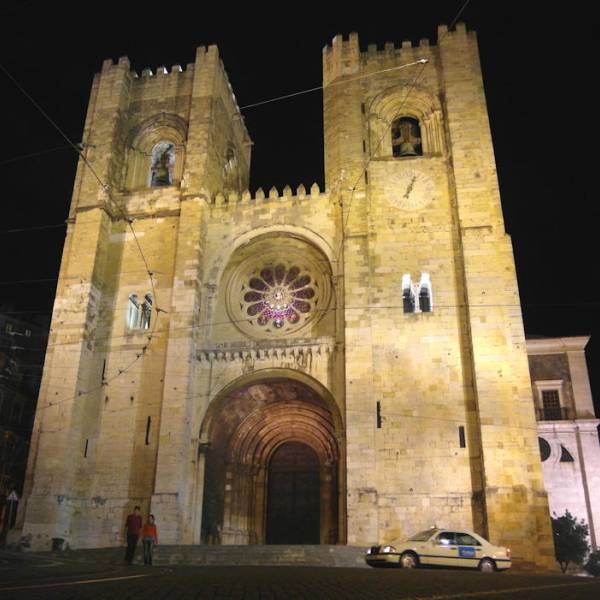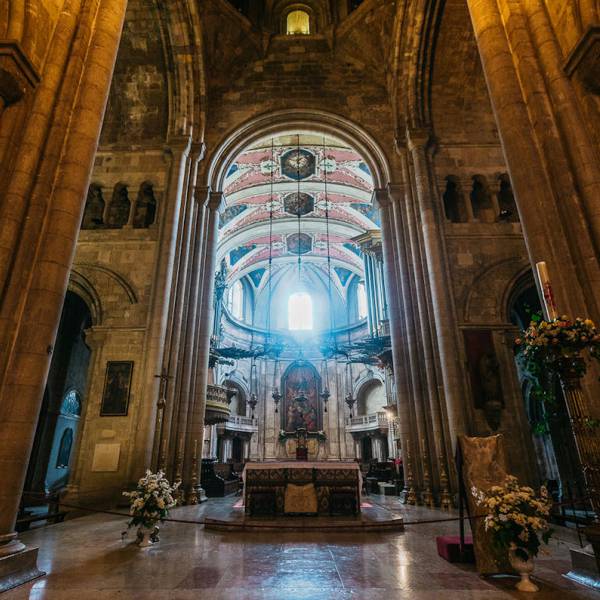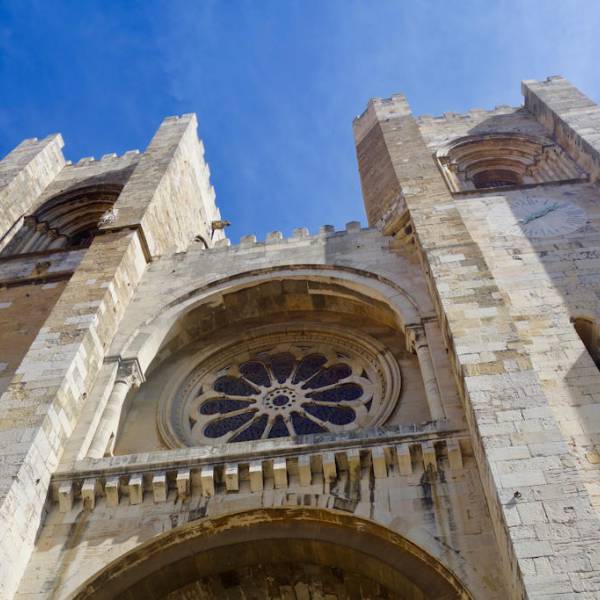Throughout its history, the cathedral has witnessed significant events and overcome natural and human-made challenges. The devastating 1755 Lisbon earthquake caused severe damage, including the destruction of the Gothic main chapel and the royal pantheon. However, it was partially rebuilt and underwent significant renovations in the early 20th century, resulting in its current appearance.
Lisbon Cathedral showcases a captivating fusion of architectural styles that reflect the passage of time and the influence of various artistic trends. Its Latin cross design includes three aisles, a transept, and a main chapel surrounded by an ambulatory. The cathedral is connected to a magnificent cloister on the Eastern side, offering a tranquil space for reflection.
The cathedral's main façade has a fortress-like appearance, with two imposing towers flanking the entrance and crenellations adorning the walls. This design element hearkens back to the era of the Reconquista when the cathedral served as a strategic base during sieges.
The Romanesque elements of the cathedral can still be admired, especially in the preserved West façade, which features a rose window and sculptured capitals with intricate motifs. The barrel-vaulted nave, adorned with an arched gallery, is bathed in natural light from the rose windows and narrow windows of the transept and lateral aisles.
Gothic influences are evident in the magnificent cloister, constructed by King Dinis of Portugal in the late 13th century. The ambulatory surrounding the Gothic main chapel consists of a circular aisle with radiating chapels. The upper storey of the ambulatory showcases ribbed vaulting and clerestory windows that fill the space with a soft glow. Within this architectural marvel rest three remarkable Gothic tombs, including that of Lopo Fernandes Pacheco, displaying sculpted figures and intricate coats-of-arms.
Throughout its existence, Lisbon Cathedral has undergone numerous renovations and adaptations to preserve its historical and cultural significance. The addition of a Baroque-style sacristy in the 17th century enhanced its beauty, while the reconstruction of the main chapel after the destructive 1755 earthquake was influenced by Neoclassical and Rococo styles.
In the early 20th century, efforts were made to restore the cathedral to its medieval grandeur by removing many neoclassical elements and emphasizing its original architectural charm. Today, visitors can appreciate the melding of Romanesque, Gothic, and other architectural styles that define the cathedral's aesthetic appeal.
The cathedral's preservation efforts extend beyond its architectural features. Ongoing archaeological excavations in the cloister have revealed remnants from the Roman, Arab, and medieval periods, providing valuable insights into Lisbon's rich history. Recent discoveries, such as the remains of an Almoravid complex believed to be a mosque, highlight the multicultural influences that have shaped Lisbon over the centuries.
Lisbon Cathedral is not only a testament to architectural grandeur but also a center of religious and cultural significance. As the seat of the Patriarchate of Lisbon, it continues to serve as a place of worship, welcoming pilgrims and locals to experience moments of reflection and spirituality.
Lisbon.vip Recommends
Lisbon Cathedral, with its storied history, architectural splendor, and cultural significance, remains an emblem of the city's resilience and enduring faith. It stands as a symbol of Lisbon's spirit, which has weathered storms, rebuilt, and emerged with a renewed sense of purpose. The cathedral's enduring presence invites visitors to embark on a journey through time and pay homage to Lisbon's rich tapestry of history, faith, and artistic expression.
In a nutshell, Lisbon Cathedral is like a cherished old friend, embraced by both locals and wanderers alike, thanks to its spellbinding fusion of architectural styles and the rich tapestry of history and culture it proudly showcases. It stands tall as a symbol of Lisbon's unyielding soul, extending a warm invitation to all who cross its threshold to step into a time machine and immerse themselves in the exquisite world of faith, history, and artistic wonder. It's a place where the past comes alive, where the echoes of centuries whisper in every stone, and where the vibrant spirit of this incredible city pulses through the air. So, come, my fellow explorers, and let's unlock the secrets of this timeless gem together!
Map View






